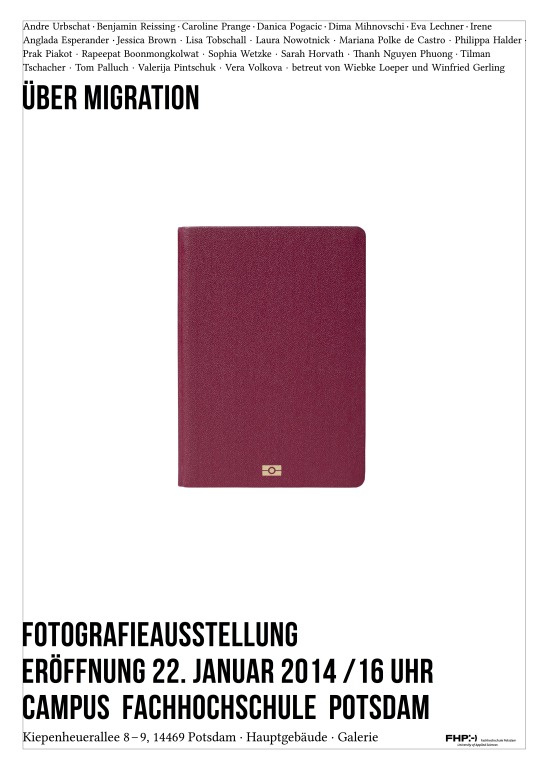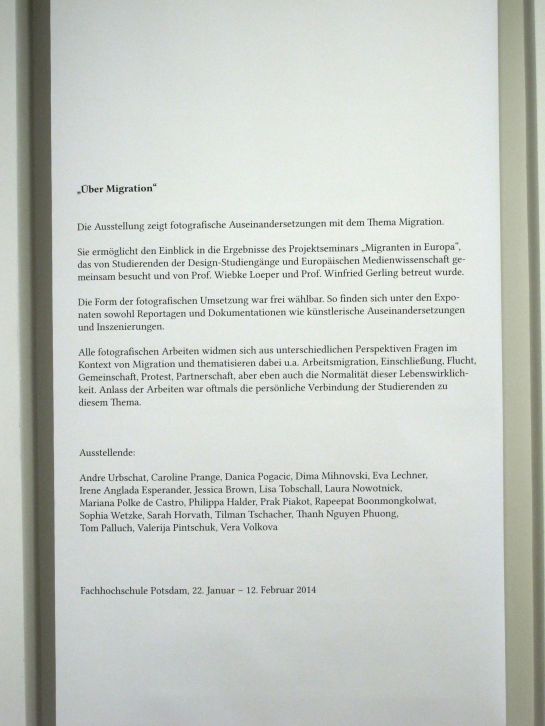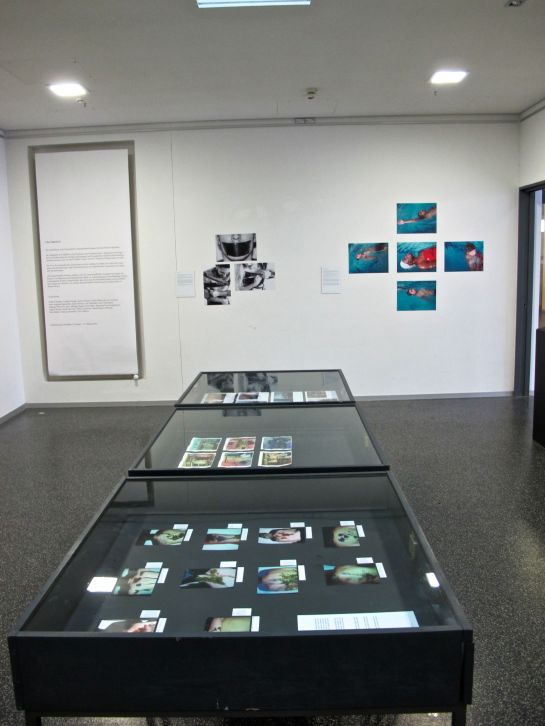I´m there with my work “das Un·kraut <-s, Unkräuter>”
“Unkräuter sind Pflanzen der spontanen Begleitvegetation in Kulturpflanzenbeständen, Grünland oder Gartenanlagen, die dort nicht gezielt angebaut werden und aus dem Samenpotential des Bodens oder über Zuflug zur Entwicklung kommen. Im allgemeinen Sprachgebrauch ist das Hauptkriterium, um eine Pflanze als Unkraut zu bezeichnen, dass sie unerwünscht ist. Je nach Sicht des Betroffenen kann ein bereits eingetretener, zu befürchtender wirtschaftlicher Schaden oder ein ästhetischer Grund der Auslöser für das Störungsempfinden sein.
Die Auslegung des Begriffs Unkraut hängt stark vom subjektiven menschlichen Empfinden ab. So werden manche Pflanzenarten pauschal als Unkraut klassifiziert, obwohl diese Art nicht nur als Unkraut, sondern auch als Nutzpflanze, Heilkraut oder Zeigerpflanze auftreten kann. Zum Unkraut wird sie erst dann, wenn sie als „störend“ empfunden wird.1”
Das Fotoprojekt versucht eine subtile Parallele zwischen Migrant_innen und Unkräutern zu schaffen. Die Grenzen zwischen erwünscht und unerwünscht kann man nicht leicht definieren.
Als störend werden Migrant_innen dann empfunden, wenn sie ihren permanenten Aufenthalt in ein anderes Land verschieben, das politisch und vielleicht sozial auch nicht auf ihre permanente Präsens vorbereitet ist.
Das politische Unerwünschtsein macht keine Aussage über das Potenzial dieser Menschen. Der Blickwinkel auf Migrant_innen kann sich verändern, wenn man versucht das Potenzial zu sehen.
:::
At Campus Fachhochschule Potsdam. Kiepenheueralle 8-9, 14469 Potsdam
Hauptgebäude – Galerie.
Until February 12, 2014.
















 Cas Oorthuys – Station Square, Central Station, Amsterdam, 1965
Cas Oorthuys – Station Square, Central Station, Amsterdam, 1965